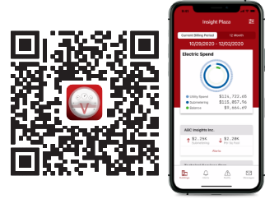BTU Billing Demystified
How properties bill for chilled water (and why that's a losing strategy)
BTU Who?
The BTU (aka "British thermal unit," though metric Britain uses the joule, not the BTU) is the unit of choice in the U.S. for measuring thermal energy. Technically, one BTU is the amount of energy it takes to heat one pound of 39°F water one degree Fahrenheit.
How much energy is that? Not much. A single BTU is approximately equivalent to burning one match or heating about 30 cubic feet of air 1°F.
But these examples are why BTUs are useful in operations, because ultimately they're a way to measure how much energy a fuel contains or how much a system can transfer. That's why BTUs are used to bill for all kinds of heat exchange systems, such as chillers, boilers, heat pumps, VRFs, air handlers, and hot and chilled lines from a district energy plant.
Here's the equation for determining the BTUs consumed during heat exchange:

The Formula vs. The Shortcuts (How Some Bill for BTUs)
The equation above is what we use in our billing, but that isn't always how things are done. We regularly see two other calculation methods based on the Q equation above but with important distinctions:
1) Billing BTUs using a fixed temperature difference (usually 10 degrees)
2) Billing on flow rate alone
If either of these approaches is explicitly what’s written into your lease agreements and everyone’s happy with that, cheers to you.
But if, like many properties, you’re supposed to be billing on Q, actual consumption, you shouldn’t use either of these shortcut calculation methods. Neither will produce accurate consumption totals.
What happens? Compare what Q would be using a delta T of 10 rather than a more typical 2. Now you’re overcharging the tenant 5x.
What if you just use the flow rate (and probably a constant)? Now you’re undercharging and lowering your profit margin.
The issues arising from bad BTU billing can be significant. In our 40+ years, we’ve seen companies accidentally charge more than their building is capable of producing. We’ve also seen tenants refuse to pay anything after months of complaints about unreasonable charges. Even after everything gets straightened out, will you eventually recover the amount you're actually owed? It rarely works that way.
Delta T Danger Signs
If delta T = 0, then the tenant is not doing anything with that water and technically shouldn’t be charged. However, supplying that heating/cooling to them is still a cost to the facility. For this reason, we recommend including a “low delta T” penalty in your lease language (see Recommendations).
If delta T < 0, you should be billing the tenant for heating, not cooling, which is usually a different rate (most utilities charge different rates in summer vs. winter).
Also, if delta T < 0, be aware that your BTU meter might not know to use the absolute value of the temp difference. And because it doesn't have this encoded in its algorithm, it will subtract the BTUs used for heating rather than adding them to the total, shrinking the dollars you recover.
Recommendations for Accurate BTU Billing
Buy a quality (i.e., revenue-grade) BTU meter. These run from $3K to $14K, depending on the size of the system you’re measuring.
If you don’t have them already, buy temperature sensors for the supply and return parts of the loop. Adding sensors to measure the temperature differential on your loop isn’t expensive (maybe $500 all-in) and is a good investment in making sure your billing is accurate.
Include reference testing as part of your annual operations planning and budgeting. BTU billing is a sum of many parts: the flow reading, the delta T, the computer and software that do the calculation, and any networking components for pushing the data to a remote reading system (like utiliVisor). Each of these parts is a potential source of error and require calibration and verification to make sure all is well. And all of that costs less than legal fights over billing disputes.
Include a low delta T penalty in your lease terms. Tenants who maintain a small (0–2 degree) difference between fluid inlet and outlet temps are forcing the building to operate inefficiently. To “encourage” behavior that helps everyone save on energy, try to include a fee for this in your lease terms to keep these tenants aware of their impact.
Consider installing a metered valve that can regulate the flow. A mechanical (not ultrasonic) valve can prevent tenants from overloading the system. Mechanical valves can also help ensure you're able to operate your building the way you see fit, such as being able to turn down equipment overnight and still meet the demand set in the lease terms.
Check the programmed settings in your BTU meter. The value for the fluid constant in the energy equation is often programmed into the BTU meter, so it’s worth checking that your inputs are correct for your setup.
As heat pumps and VRF systems become more popular, it’s important to make sure your meter is capable of capturing when your system is cooling vs. heating. Many meters in the field aren’t capable of this. When the delta T goes negative on those meters, the totalizer value will go down. However, just because you’re “driving in reverse” doesn’t mean you’re not putting miles on the car.
You Might Like
About utiliVisor
Your tenant submetering and energy plant optimization services are an essential part of your operation. You deserve personalized energy insights from a team that knows buildings from the inside out, applies IoT technology and is energized by providing you with accurate data and energy optimization insights. When you need experience, expertise, and service, you need utiliVisor on your side, delivering consistent energy and cost-saving strategies to you. What more can our 45+ years of experience and historical data do for you? Call utiliVisor at 212-260-4800 or visit utilivisor.com



